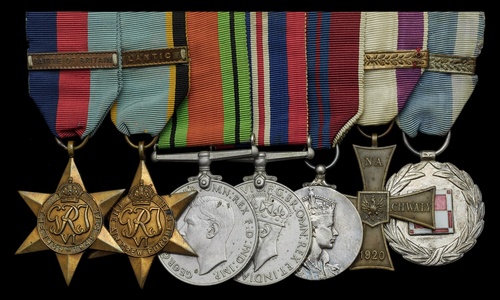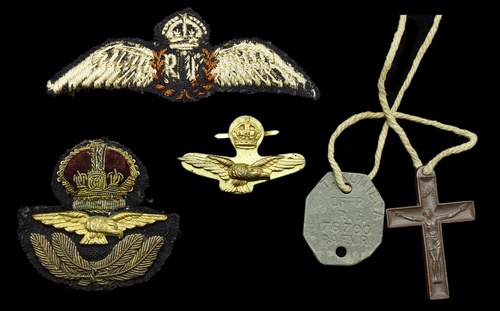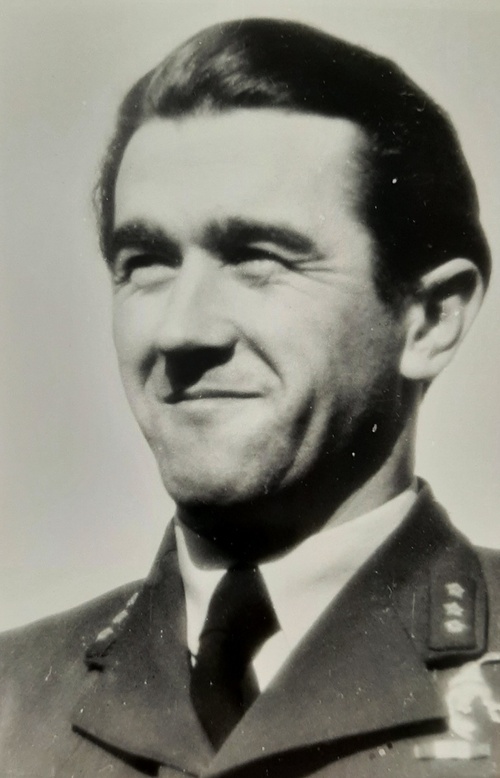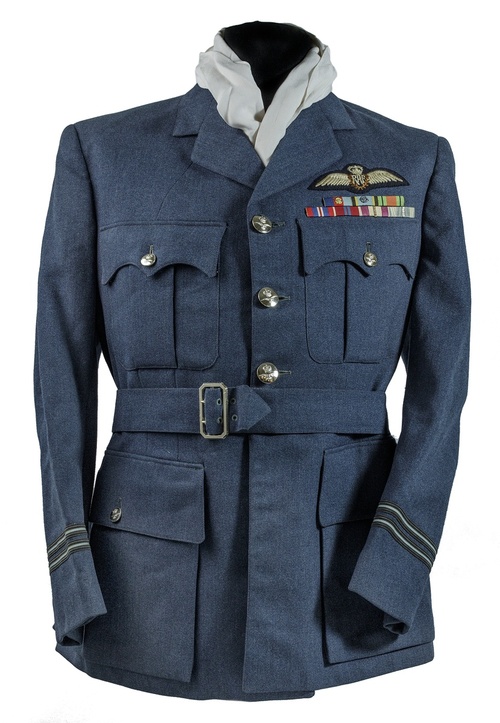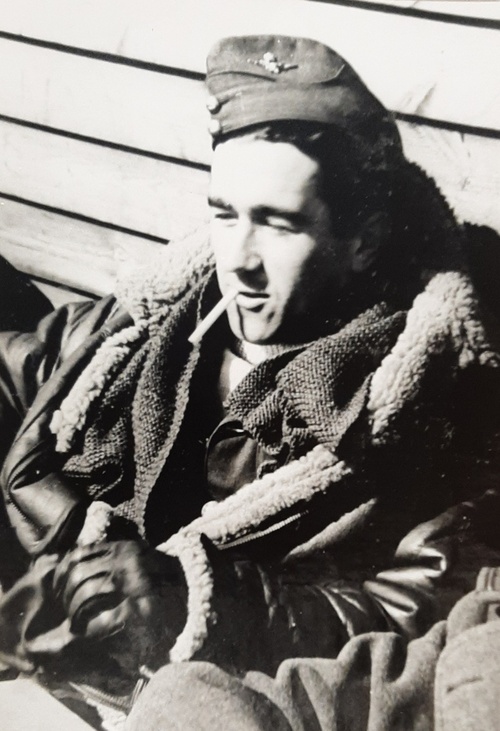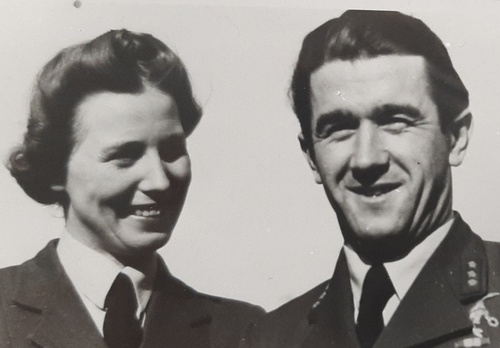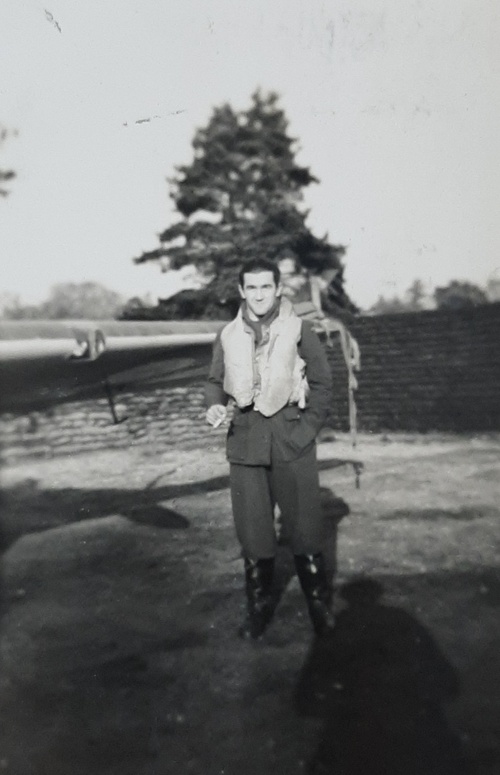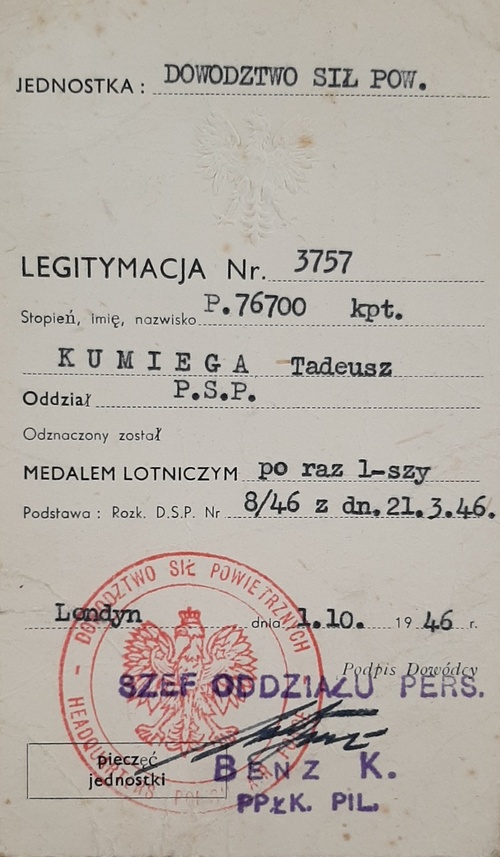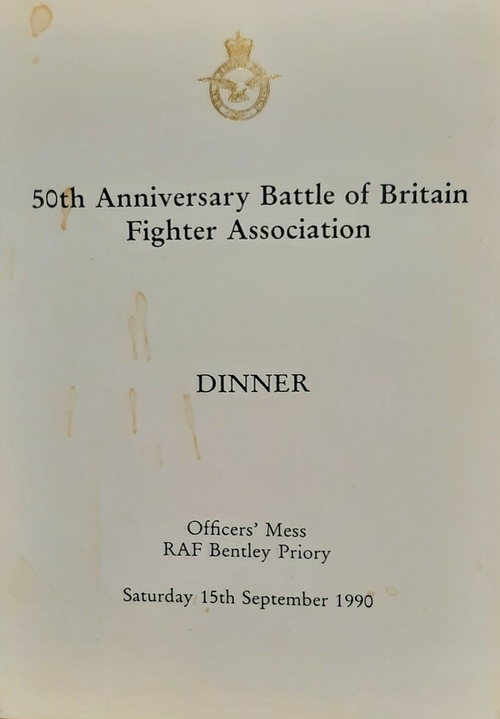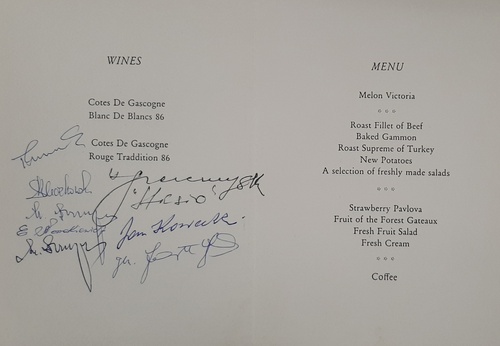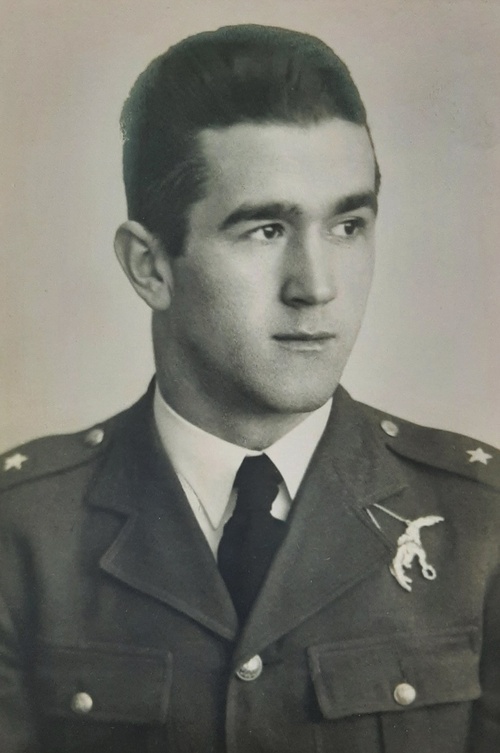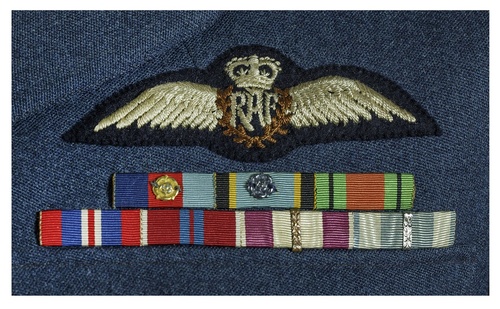Auction: 24003 - Orders, Decorations and Medals
Lot: 132
'I dived and attacked him from astern quarter firing a 2 seconds burst at 100 yds, range. As I broke away upwards, Sgt. Hogg made astern attack - range 250 yds, burst - 2 seconds. I then made another quarter attack from 300 yds, with a burst of 1 ½ seconds.
The Me109 then climbed very fast, and gained on us. We saw Glycol smoke pouring from it. Then the E/A dived, and Sgt. Hogg caught him just as he went into a cloud and fired a 1 second burst at 400 yds. I overtook the E/A turned and made another quarter attack at 80 yds range with a 2 seconds burst. Sgt. Hogg gave several more short bursts.
The E/A then turned over on his back and the pilot jumped while his a/c was upside down at a height of 1500 to 2000ft. We saw the machine crash and break up on Foulness Island. The pilot landed near the a/c in a ploughed field.'
Combat Report of 29 October 1940, refers
The well-documented fighter Pilot's Polish Cross of Valor and Bar group of seven awarded to Squadron Leader T. L. Kumiega, No. 17 (Fighter) Squadron, Royal Air Force, late Polish Air Force
Kumiega shared in the Battle of Britain and flew from Tangmere, notching up a shared kill - an Me109 - on 29 October 1940 and later added to his tally in December 1941
1939-45 Star, copy clasp, Battle of Britain; Air Crew Europe Star, clasp, Atlantic; Defence and War Medals 1939-45; Coronation 1953; Poland, Republic, Cross of Valor, with Second Award Bar; Air Force Medal, with bar, mounted as worn, sold together with the recipient's Flying Log Book, as well as an impressive archive of original material, good very fine (7)
K.W. London Gazette 5 May 1942.
Second Award Bar to K.W. London Gazette 20 August 1942.
Tadeusz Leon Kumiega was born on 16 October 1916 at Antoniow, West Wroclaw. A testimonial written on his life mentions that prior to joining the military he had learned to fly gliders, recreational gliding being a popular sport in Eastern Europe and Germany during the inter-war period. He joined the Polish Air Force in 1935, graduating from the Academy at Deblin in 1938, into 121 Fighter Squadron at Kracow.
September 1939
The following year he was posted back to the Air Force College as an Instructor and it was there that Kumiega found himself teaching the next generation of fighter pilots even as the country descended into war. His typed testimonial provides us with a grim picture of the air war over Poland, stating:
'My first and only operational flight in Poland lives vividly in my memory. I found myself in a fighter training P7, after a scramble, above a flight of Dornier 17's heading towards me. Only a year previously, I had been taught and only days before, I had been teaching pupils the delivery of such an attack. Angle, distance and deflection, as in the text book. I saw the tracers of the rear guns coming towards me only a fraction before I pressed the guns. Alas, the two Lewis 1918 guns, never called upon to deliver more than 20 rounds in training, jammed and brought the engagement to an end. The rear gunner was no longer firing but the Dornier 17, faster than my P7, was fast drawing away.'
As the war ground towards its inevitable end Kumiega and the other pilots were ordered to fly to Romania where they were interned but later released and sent to Syria. From Syria he was travelled to France and from thence to England in January 1940, joining the Polish Wing at No 3 School of Technical Training Blackpool on 1 June 1940.
Battle of Britain
From there posted to 15 Elementary Flying Training School between 18 July-1 August before graduating to the Operational Training Unit at Sutton Bridge for conversion to Hurricanes. After this he was posted to No. 17 (Fighter) Squadron at Tangmere on 1 September 1940, flying with them throughout the Battle of Britain. He was present for several engagements during this time, being mentioned in numerous after-action reports, however his time wasn't to come until 29 October.
On this day Kumiega and a Sergeant Hogg playing tail gun Charlie for their Squadron over North Weald when they spotted a lone German Fighter about 6,000 feet beneath them, the combat report outlines what happened next:
'I dived and attacked him from astern quarter firing a 2 seconds burst at 100 yds, range. As I broke away upwards, Sgt. Hogg made astern attack - range 250 yds, burst - 2 seconds. I then made another quarter attack from 300 yds, with a burst of 1 ½ seconds, The Me109 then climbed very fast, and gained on us. We saw Glycol smoke pouring from it. Then the E/A dived, and Sgt. Hogg caught him just as he went into a cloud and fired a 1 second burst at 400 yds. I overtook the E/A turned and made another quarter attack at 80 yds range with a 2 seconds burst. Sgt. Hogg gave several more short bursts. The E/A then turned over on his back and the pilot jumped while his a/c was upside down at a height of 1500 to 2000ft. We saw the machine crash and break up on Foulness Island. The pilot landed near the a/c in a ploughed field.'
As the transcript suggests this was a shared kill but certainly demonstrates Kumiega's hunting instinct, pouncing upon the enemy as soon as possible. What is interesting however is his own view of that time, which centres not upon the battles but the people, his testimonial stating:
'What I remember most of those days was, fast flowing adrenalin, scores of eager young men, some boys, with hearts bigger than their awareness of danger, the short lives, quiet sadness and continuity of effort and purpose of those who survived. Looking back at those days from a distance of years, I am glad that I lived through those times with so many ordinary and gallant friends. Yet sometimes, I am envious of those much truer and braver men, whose lives were cut short by the hazards of their own choosing.'
It is characteristic of Kumiega's modesty that his Flying Log Book makes no comment of the 'kill' in October- beyond listing the type of aircraft- but does mention his 'C.O.s Wedding' on 19 November.
317 'City of Wilno' Squadron
Posted to 317 Squadron on 24 February 1941 accompanied by a promotion to Flying Officer on 1 March. Despite the end of the Battle of Britain he still saw a great deal of action including numerous scrambles and a new feature of the war, providing fighter cover for bombing raids. The Squadron was refitted with Spitfires in October and it was while flying a Spitfire V that Kumiega earned his first solo kill on 18 December while covering a bombing raid over Brest. This was another Me109, again he provides no commentary beyond noting the aircraft type.
Kumiega describes this period as follows:
'I flew with 317 Polish Fighter Squadron and afterwards with 308 Polish Fighter Squadron [on detachment] throughout 1941 until June 1942 Convoy protection, offensive sorties over France, night defence and low level attacks on enemy targets was the pattern of our exciting and at times, monotonous life.'
His achievements in this time did not go unnoticed and he was awarded the Polish Cross of Valor twice in quick succession. A bout of ill health saw him admitted to hospital in Torquay, in the summer of 1942 and due to this he was removed from Operational Flying.
Life After Flying
Promoted Flight Lieutenant on 1 September 1942 Kumiega was posted as Liaison Officer to R.A.F. Matlast on 16 September. He served there for over a little over a year, later joining the Headquarters for Air Defence of Great Britain as a Staff Officer in the rank of Acting Squadron Leader on 30 June 1944. Here he served at Bentley Priory and was appointed Senior Personnel Staff Officer.
The end of the war saw him relinquish his rank and take up the post of Pilot Office with the Polish Resettlement Corps, he held this for the maximum period of two years, laying it down in October 1948. Having finished his work with the Resettlement Corps Kumiega received a commission as Flight Lieutenant with the Secretarial Branch of the Royal Air Force. He largely served in Flying Schools and Personnel Despatch units post-war however did see a spell in Iraq in 1949.
He was finally placed on the retired list at his own request on 1 June 1966, his testimonial expands on his life after the military, stating:
'Gold has always had a magic attraction for humanity, so on my retirement, I going the Bank. After flying, the heady days of war and camaraderie of service life, that precious commodity provided a satisfying substitute.'
He settled in Gloucestershire initially however when he died on 28 October 1995 he was buried at Queensgate Cemetery, Beverly, Yorkshire.
Sold together with research including Combat Reports and several copied photographs, besides an archive of original material comprising:
i)
The recipient's Flying Log Book, covering the period July 1940-May 1942, covering both of his 'kills'.
ii)
Two original photographs of the recipient in uniform.
iii)
Typed document entitled The History of Our Lady of Kozielsk
iv)
Service record along with a communication from the MOD confirming that the record was released with the recipient's permission.
v)
Letters and postcards between the recipient and a collector confirming the sale of his Medals and archive as well as a typed biography by the recipient.
vi)
Signed 50th Anniversary Battle of Britain Dinner and a ticket for a service at Westminster Abbey celebrating the same event.
vii)
Various movement orders, account booklets, passes and identity cards all in the recipient's name.
viii)
Two R.A.F. patches and a Cap Badge.
ix)
Identity tag on a string with a crucifix.
x)
x)
Post-war Royal Air Force Officer's No.1 Tunic, by Burton, with Queen's Crown Wings, riband bar to include the gilt rosette on the 1939-45 Star, denoting 'BATTLE OF BRITAIN', together with a scarf with which he flew.
Subject to 20% VAT on Buyer’s Premium. For more information please view Terms and Conditions for Buyers.
Sold for
£8,000
Starting price
£6000

